In this article:
A bunion, also known as hallux valgus, is a foot deformity in which the big toe deviates laterally, causing a large bony protrusion. The causes are numerous and complicated, and bunions can be difficult to treat.
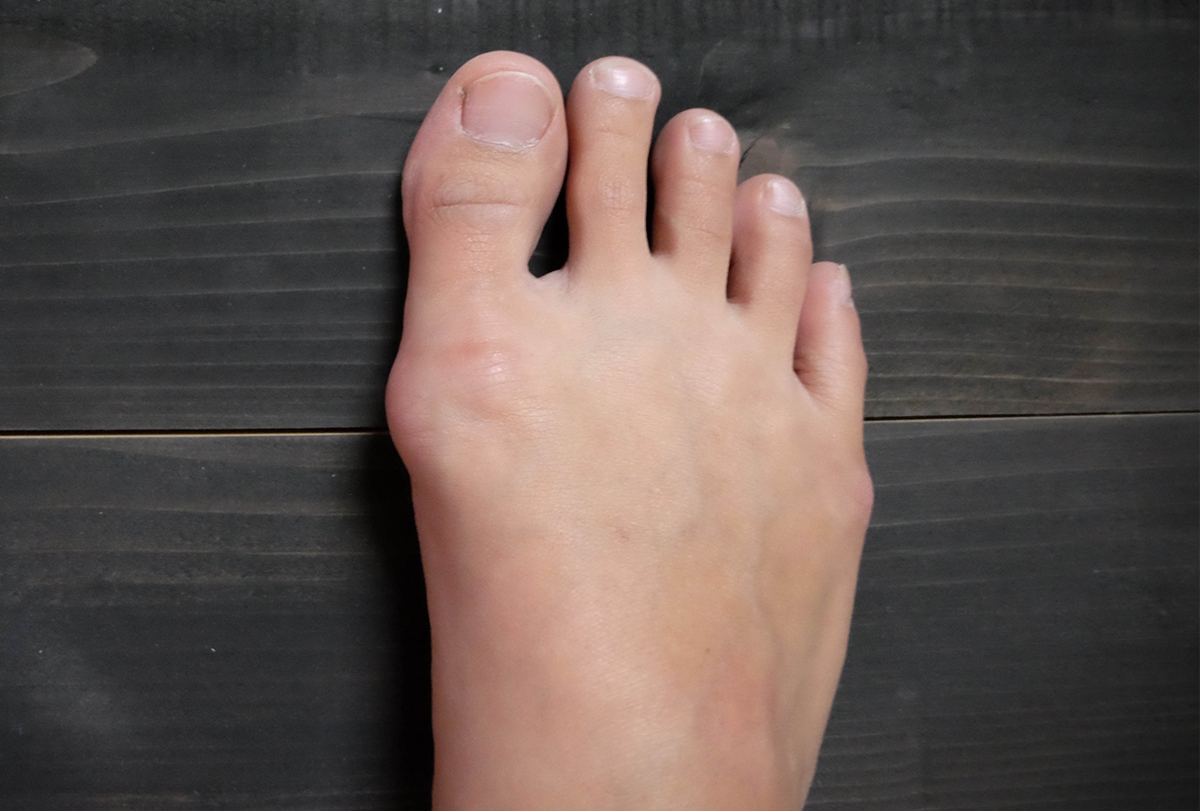
The development of a bunion is usually the outcome of genetic predisposition and the prolonged wearing of improper shoes. Over time, an outward protruding bony bump sticks out from the base of the big toe.
Because this deformity manifests at the site of the big toe joint, it makes it extremely painful for you to walk or move your big toe. It is also difficult to find shoes that fit properly.
How Common Is It?
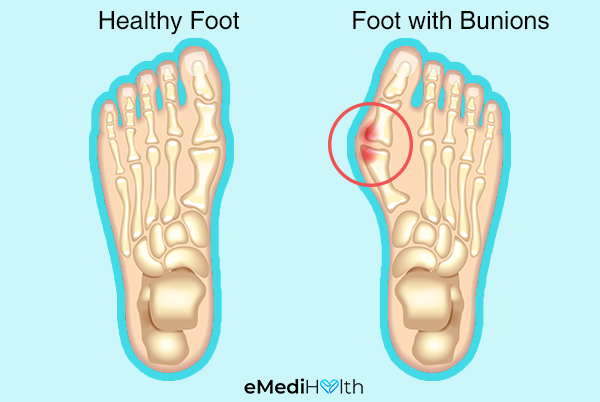
Nearly a third of the adult population in the United States is affected by bunions, with increased prevalence among women due to the typically restrictive design of female footwear.
Causes and Risk Factors
Bunions are common, but the exact reason for their occurrence is largely unclear. However, some people are more likely to develop bunions than others.
- People who regularly wear tight, narrow, or high-heeled shoes are more likely to develop a bunion. (1)
- People who have family members with bunions are predisposed to this condition.
- People whose work requires them to stay on their feet or walk for long stretches have an increased risk of developing bunions.
- Ballet dancers are especially prone to developing bunions as their feet go through regular excessive straining.
- Bunions are a common occurrence in people with a problematic foot structure, such as those with unusually loose ligaments, abnormally flexible joints, or flat feet.
- Pregnant women are at an increased risk of developing bunions and other foot problems as they undergo certain hormonal fluctuations that render their feet increasingly flat and their ligaments quite loose.
- People with rheumatoid arthritis and certain neuromuscular health conditions have an increased likelihood of developing bunions.
- The anatomy of the first metatarsal bone also plays a role in the occurrence of bunions. If the top of this bone is too rounded, the risk of deformity is greater.
Several other factors can predispose you to this condition, such as:
- Inherited structural defect of the foot
- Foot injuries
- Foot deformities present at birth
Symptoms of a Bunion
A bunion is usually accompanied by the following discomforting symptoms:
- The skin surrounding the bunion is likely to be increasingly irritated and painful.
- You may notice redness, swelling, and inflammation around the affected joint.
- Corns or calluses may develop on the raised site.
- The skin may be tender to the touch.
- The big toe may become increasingly stiff, which can hamper its movement and make walking difficult.
- The big toe may shift laterally against the adjacent toe, making it difficult to find shoes that fit properly.
- In severe cases, the second toe can override the big toe.
Medical Treatment for Bunions
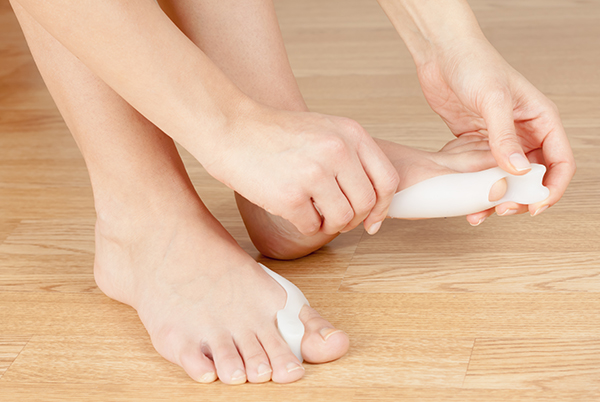
An uncomplicated case of bunions usually resolves with non-surgical interventions, but surgery may be needed when there is foot deformity involved.
1. Nonsurgical treatment
The doctor will recommend any of the following first-line treatments for bunions, which are intended to provide symptomatic relief rather than correct the physical deformity of your foot:
- Over-the-counter analgesics or a nonsteroidal anti-inflammatory drug such as paracetamol (acetaminophen) and ibuprofen can help with pain management.
- Reusable bunion pads provide cushioning to ease the pressure over the big toe, and they are readily available at most pharmacies. These pads are usually made of gel or fleece and provide a protective covering over the affected area to prevent the bump from rubbing against the shoe surface.
- Orthotics (braces) or insoles are fitted inside your footwear to provide support to your feet. By realigning your foot’s skeletal frame in such a way that the pressure is evenly distributed instead of being concentrated on the protruding bunion alone, orthotic fittings can help relieve the pain.
2. Bunion surgery
If your bunion does not respond to nonsurgical treatments, it may have to be removed surgically to allow pain-free movement.
Unlike nonsurgical methods, bunion surgery serves a dual purpose: to ease the pain associated with bunions and to correct the structural abnormalities in the foot. Your doctor will take into account the following factors before zeroing in on either a single procedure or a combination of surgeries:
- Age, medical history, and level of activity
- The extent of foot deformity
- Severity of discomfort
ALSO READ: Bunion Surgery: Procedure, Risks, Complications, and Recovery
Diagnosing Bunions
Bunions are easy to spot. The bony bump typically protrudes from the base of the big toe or side of the foot. All it takes is a visual assessment of the foot for your podiatrist to make a diagnosis.
If the doctor feels the need for a more in-depth analysis, he/she may recommend a foot X-ray to determine the extent of damage and any anatomical changes that may have occurred.
Possible Complications of Bunions
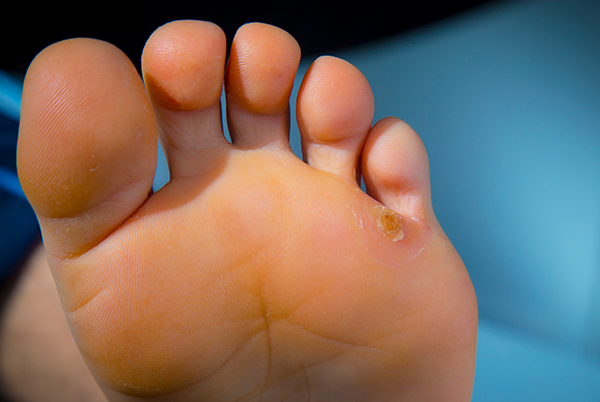
An untreated bunion can lead to intense pain and can distort the shape of your foot.
1. Calluses
In advanced stages, the big toe will progressively twist inward and push the second toe closer to the third one, thereby increasing friction between the two. The constant rubbing can lead to the development of calluses, which will make your condition even more painful and walking even more difficult.
2. Bursitis
Every joint is surrounded by fluid-filled sacs called bursae that act as cushions to reduce friction in the joint during movement. Severe bunions usually involve an enlargement of the big toe joint, which then exerts greater pressure on the surrounding bursae, causing them to become inflamed. This is known as bursitis, and it can further impede your ability to walk.
3. Arthritis
Because the deformed big toe joint is unable to glide smoothly, the smooth cartilage covering it tends to degenerate gradually, increasing the risk of osteoarthritis and chronic pain.
When to See a Doctor
It is advisable to seek professional medical intervention in the following situations:
- If your pain worsens despite adequate rest and self care measures
- If you experience extreme stiffness in your big toe that makes it difficult to move it
- When the pain arising out of the bunion does not subside even after taking remedial measures
- When the pain stemming from the bunion makes it increasingly difficult for you to conduct your daily activities, hindering simple tasks such as walking or wearing shoes
- If the bump expands to a size that makes it difficult for you to find a shoe that can accommodate your foot comfortably
- If you suspect that the affected area may have become infected due to increased redness and swelling, more so if you have diabetes
Expert Answers (Q&A)
Answered by Dr. Hai-En Peng (Podiatrist)
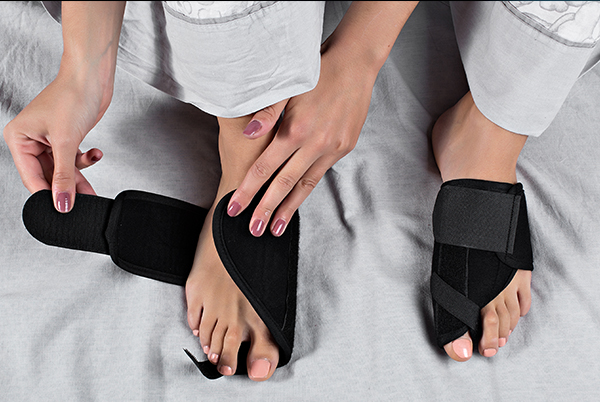
Yes. If you leave your bunion unattended, it will get increasingly difficult to fit shoes. Also, the pain worsens because bunions are a progressive deformity, which means it gets worse if left untreated.
Nothing can stop the progression of the bunion, and you can only reverse it with surgery.
The one thing that can slow down the progression is custom orthotics. Please see your nearest podiatrist to get one fitted, if you are not ready to surgically correct your bunion.
Yes, if the wrong procedure is selected to repair the bunion. Be sure to consult your surgeon to ensure the correct procedure is done to keep your bunion from coming back.
In my opinion, those don’t really work in the long term, but it may help a little in the short term for pain reduction only. Remember, these devices have not been shown to reverse the deformity.
Final Word
If a bunion is not treated properly, it can give rise to a lot of pain, discomfort, and even deformity. Thus, it is important that you adopt the proper self care measures along with wearing proper orthotic footwear and performing foot exercises to relieve the discomfort and prevent worsening of the condition.
If the condition fails to improve or if you notice new complications, consult your podiatrist for proper medical assistance.

- Was this article helpful?
- YES, THANKS!NOT REALLY



